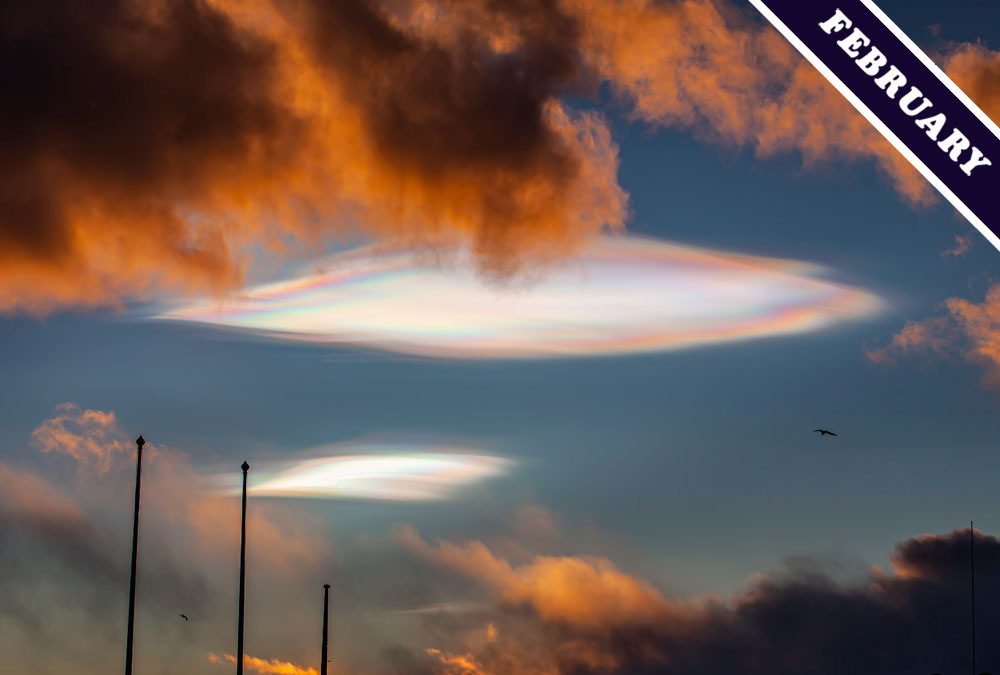Mother-of-Pearl in the Sky
These are nacreous clouds, spotted from Húsavík in northern Iceland by Gunnar Jóhannesson. Also known as mother-of-pearl clouds, they shine in opalescent colours against a darkened sky when the Sun is below the horizon. The technical name for them is polar stratospheric clouds because they appear over higher latitudes – towards the Poles – and up in the stratosphere, at altitudes of 10-15 miles (15-25 km), which is above the region of our atmosphere, called the troposphere, where most clouds form. Up in this cold part of the atmosphere, the distinctive mother-of-pearl colours of nacreous clouds can appear during the winter months in the hour or so running up to sunrise or following sunset.
Nacreous clouds sometimes consist of droplets of nitric acid or sulphuric acid, but these ones spotted over Iceland were likely made of water ice crystals. “It was a windy day,” Gunnar told us, “clearly with more wind higher up, for the normal clouds were moving quite fast.” The normal clouds were the far lower Cumulus, appearing dark and bronze in the evening light. And while they’d have been zooming along in the winds, the high nacreous formations would have stayed put. This is because these nacreous are actually extremely high forms of lenticularis cloud, the disc-shaped formation that appears hovering in place in the rising and dipping airflows downwind of hills and mountains. When atmospheric conditions are stable, these wave-like flows of wind can push right up into the stratosphere, lifting moisture into the normally dry stratosphere. When temperatures are particularly cold in the stratosphere, this fleeting presence of moisture can form into tiny ice crystals. “The clouds are called glitský in Icelandic,” explains Gunnar. “Glitský form when it is unusually cold up in the stratosphere, with temperatures at around -70ºC to -90°C (-95ºF to -130ºF).”
The size of the ice crystals is crucial for the appearance of the cloud colours. The crystals are particularly small and even in size because moisture up there is scarce and they don’t hang around for long. Such tiny crystals separate out the wavelengths of light by scattering, or ‘diffracting’, it as it passes around them. When the tiny crystals are all of a similar size, this special scattering of light appears as bands of muted rainbow colours. “Even though there’s little light at the ground, or it’s even dark,” Gunnar added, ”the cloud colours stand out as they are ‘inspired’ by the Sun.”
Nacreous clouds spotted over Húsavík, Iceland by Gunnar Jóhannesson.




New to the society. Love winter cloud formations.